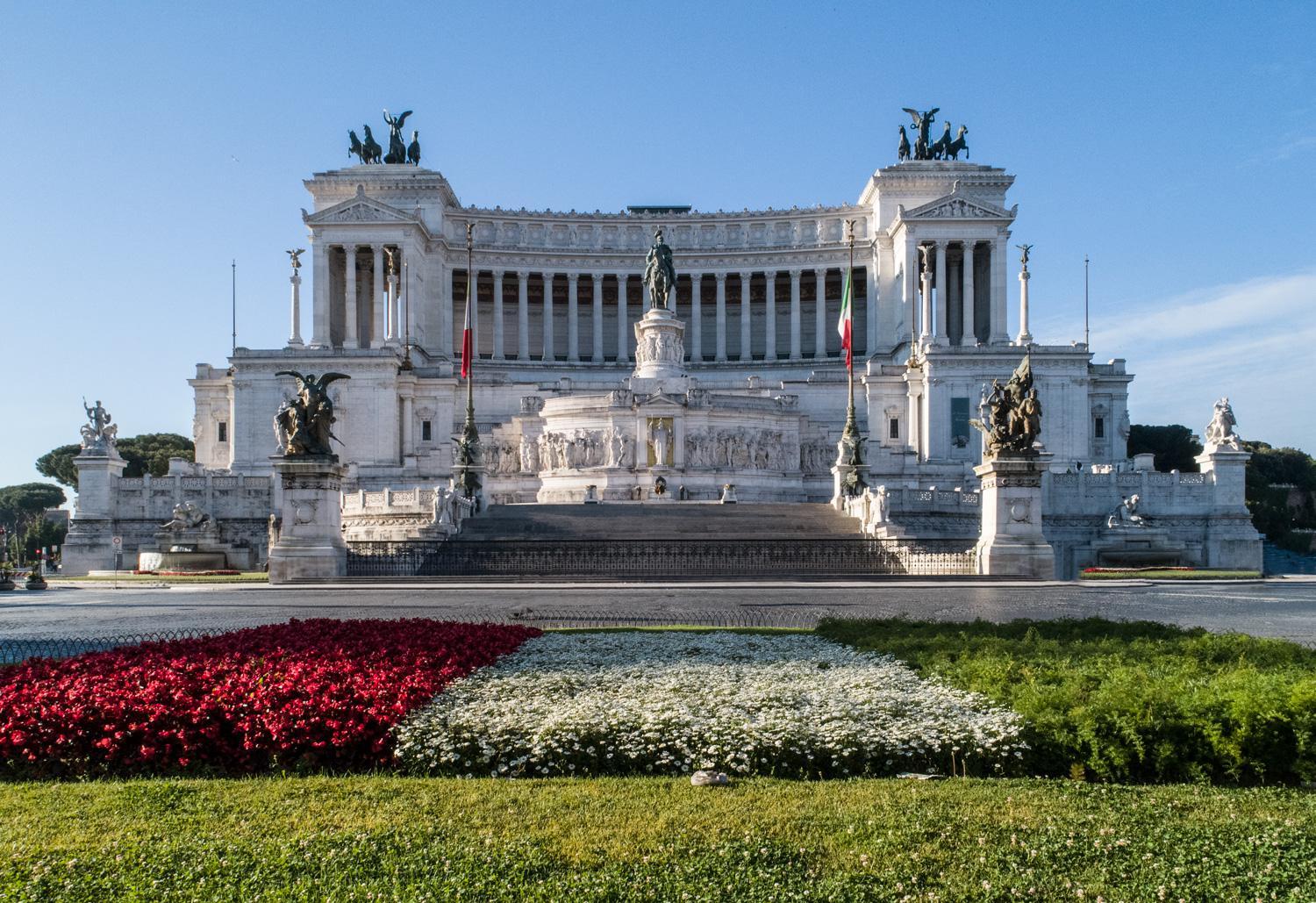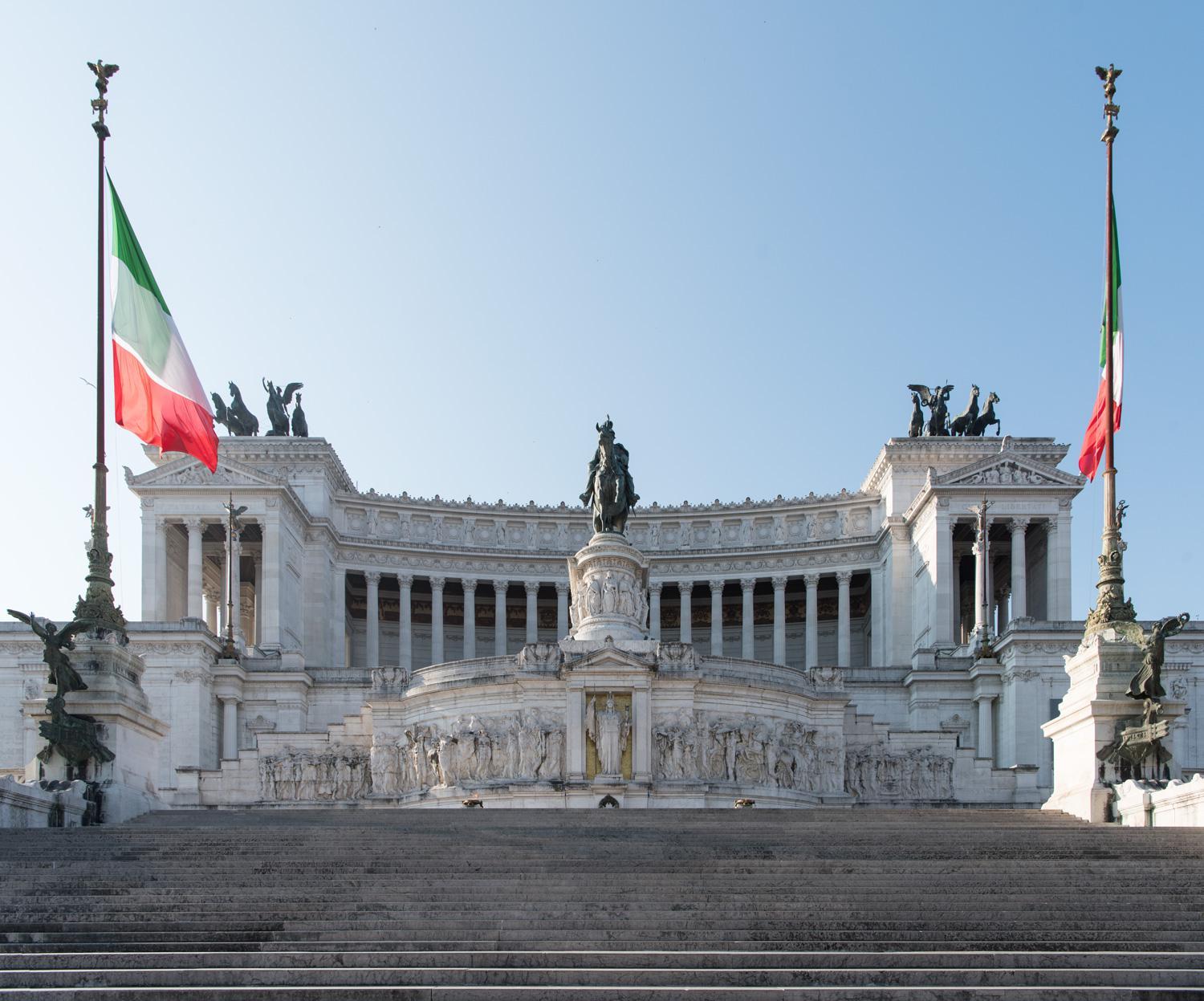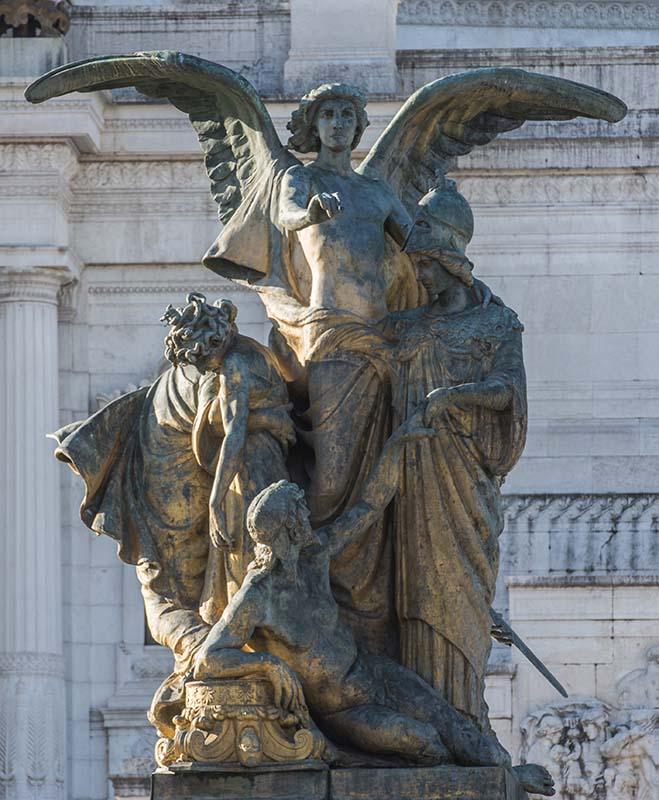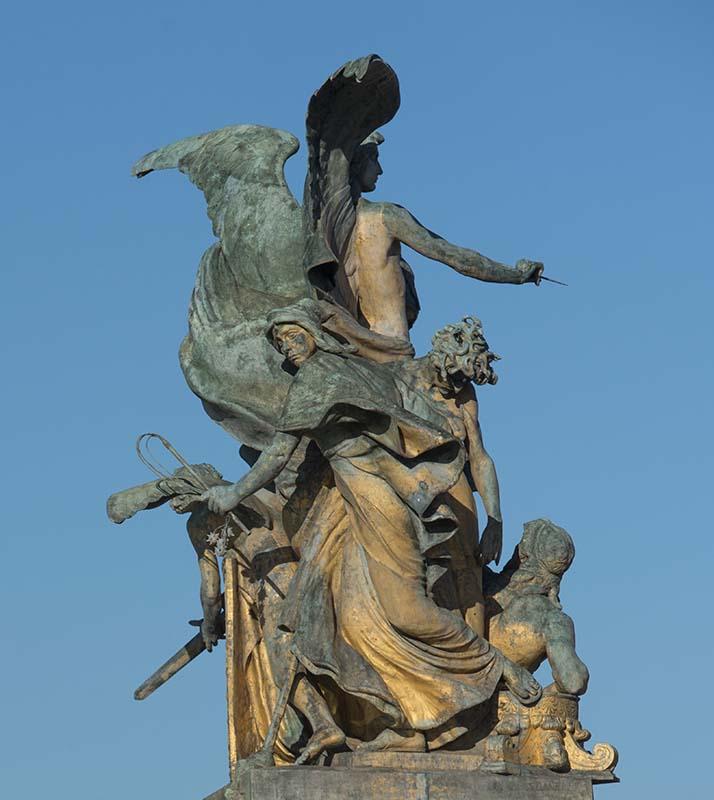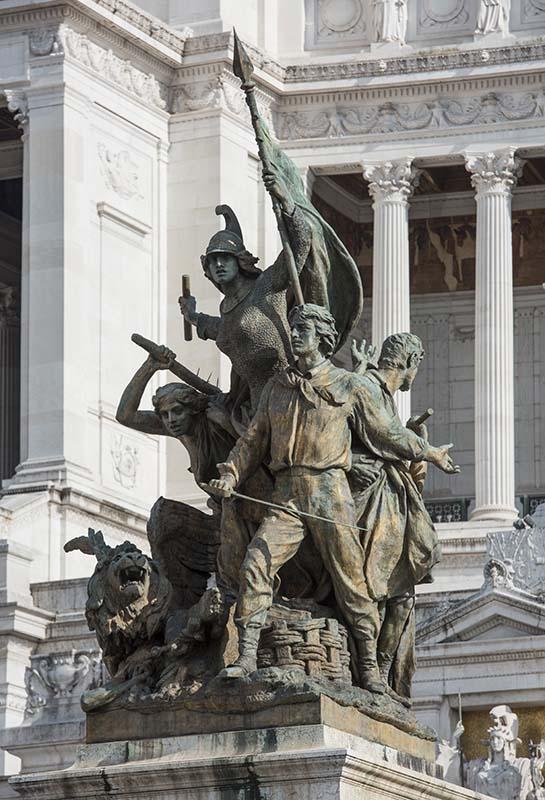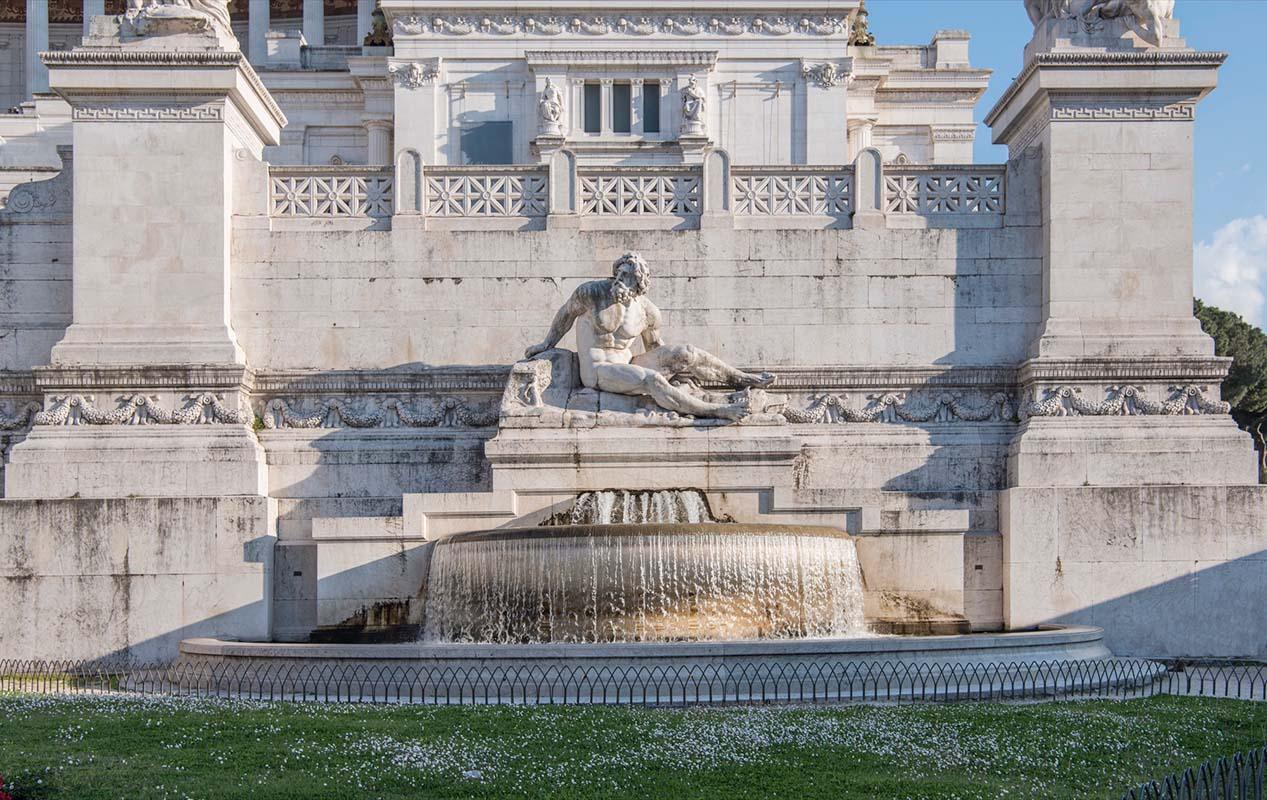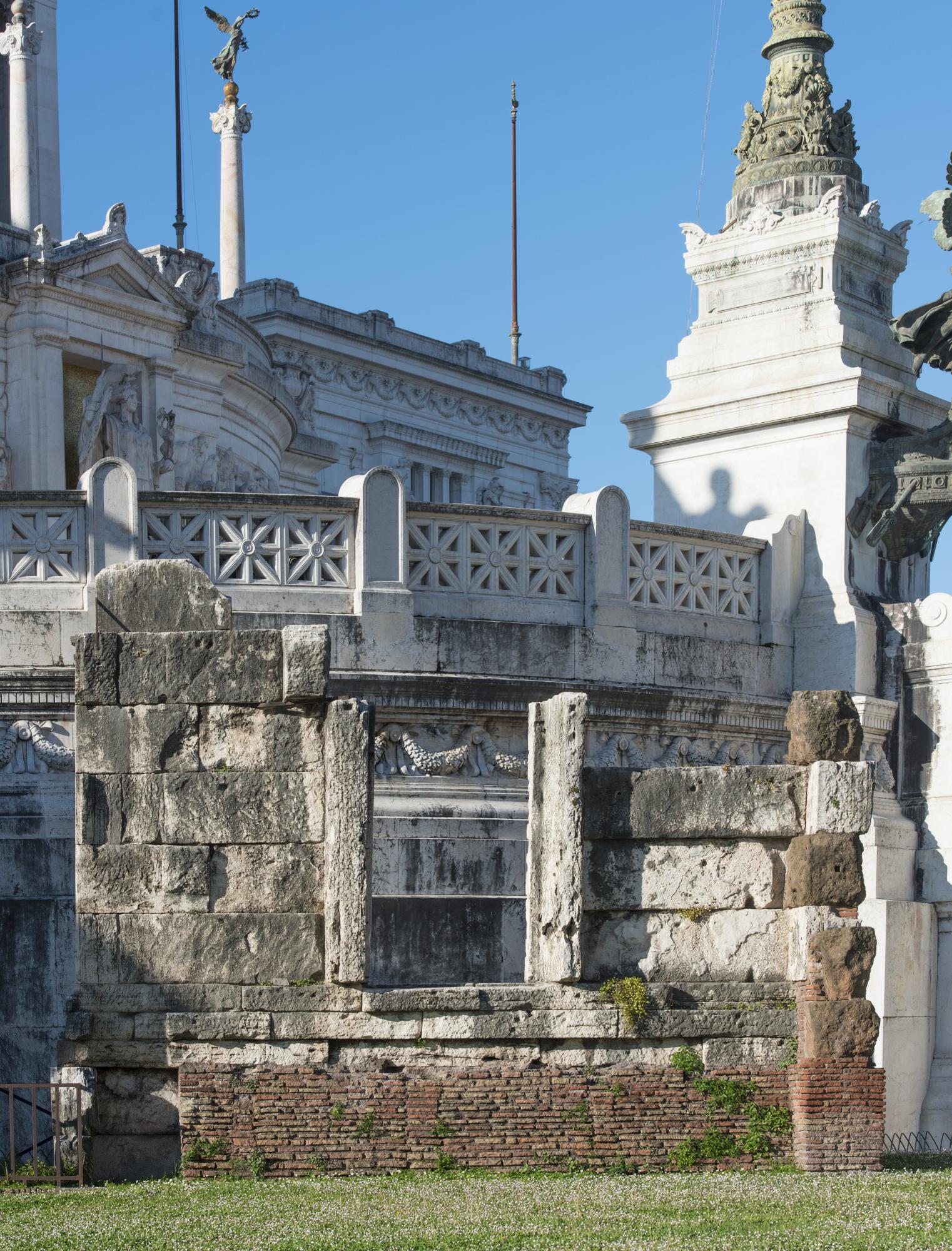Main entrance
This is the main visitor entrance to the monument in honour of Victor Emmanuel II and its imposing sculptural decorations, which was begun in 1885 and designed by Giuseppe Sacconi.
Conceived in 1878 to honour the memory of the first king, work began on the construction of the Vittoriano in 1885, based on the design by Giuseppe Sacconi, on the north side of the Capitoline Hill, one of the Seven Hills of Rome. Its structure is basically simple, a statue of the king on horseback within an imposing architectonic backdrop made of Botticino marble.
On the sides of the gate, two groups in gilded bronze, 10 metres high, stand tall. To the east there is The Thought by sculptor Giulio Monteverde from Piedmont (1837-1917). Monteverde was commissioned in 1907 and finished the work in 1910, in time for the inauguration ceremony of the monument on 4 June 1911 in the presence of King Victor Emmanuel III, on the occasion of the fiftieth anniversary of the Unification of Italy.
Monteverde imagined The Thought with outstretched wings, resting a hand on the shoulder of The Wisdom, depicted with the helmet and shield of the classical goddess Minerva. The Wisdom, in turn, stretches out her hand to The Italian People lying at her feet. The group is completed by The Discord with the scourge that drags away The Tyranny, recognisable by the hair in the form of snakes and, at the back of the group, by The Genius of War, represented with Roman weapons.
To the west there is The Action by Francesco Jerace from Calabria (1853-1937). Jerace was awarded the assignment in 1907 too, but he delivered the work only in 1912.
At the sides of the main entrance there are two fountains: the fountain to the east with The Adriatic Sea is by Emilio Quadrelli from Milan (1863-1925); the western fountain with The Tyrrhenian Sea by Pietro Canonica from Piedmont (1869-1959). The two sculptors received the assignment in 1908 and delivered the work in 1911.
In front of the Fountain with The Adriatic Sea there are the remains of a monument from the 1st century BC, one of the few spared whilst building the Vittoriano. Originally, it appeared as a small temple with a cella on a high podium, which is now largely buried. The dedicatory epigraph is still visible on the back: it tells us that the monument was built by the Senate for the funeral commemoration of Gaius Publicius Bibulus. Bibulus was an aedile of the plebes: he was one of the magistrates involved in the surveillance of road and building works, a role in which he had proved excellent.
The monument was erected at the beginning of the so-called Clivus Argentarius, the road that ran through the pass between the Capitoline and the Quirinale hills: the pass, already partially excavated for the construction of the Forums, i.e. the series of colonnaded squares built by the Roman emperors, was completely removed in the fascist era to make way for via dei Fori Imperiali.

